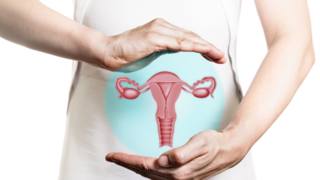What Is Eclampsia?
Eclampsia is a serious problem during pregnancy that causes fits or seizures. It typically occurs in individuals with high blood pressure or conditions like preeclampsia. However, not all cases follow this textbook progression. In fact, up to 55% of eclampsia cases may happen in women who had no prior diagnosis of high blood pressure. When this happens in an unusual way, it's known as atypical eclampsia.What Did the Study Reveal?
A Japanese multicentre study examined eclampsia cases and found some distinct differences in women who did not have prior high blood pressure (non-HDP group):- Later gestational age at delivery
- Seizures more commonly occurred during labour
- Blood pressure at seizure onset was often normal or only mildly elevated
- Higher white blood cell counts
- Increased number of male infants
These findings suggest that the underlying mechanisms may differ from traditional eclampsia.
Why Is This Important?
Many expectant mothers and clinicians rely heavily on blood pressure monitoring to detect potential complications. However, if eclampsia can occur without elevated readings, it becomes critical to consider additional symptoms and risk factors. This also stresses the importance of broader diagnostic awareness.What Could Be Causing Atypical Eclampsia?
Several potential explanations have been proposed for why eclampsia can occur in the absence of high blood pressure:- Immune system changes during labour, which may not affect standard inflammation markers like CRP
- Disruption of the blood–brain barrier (BBB), allowing immune cells and fluid to reach brain tissue and trigger seizures
- Foetal antigenicity, particularly from male foetuses, may provoke stronger maternal immune responses
Symptoms to Watch For
Even without high blood pressure, certain symptoms may act as warning signs for eclampsia:- Persistent headaches
- Blurred vision or visual flashes
- Pain in the upper right abdomen
- Sudden swelling of the face, hands, or feet
The Challenge of Unpredictability
One of the most concerning aspects of atypical eclampsia is its sudden onset. Some patients in the study had completely normal clinical measurements shortly before experiencing a seizure. This highlights the need for ongoing monitoring, regular antenatal care, and open communication with healthcare providers.What Can Expectant Mothers Do?
- Attend all antenatal appointments, even if you feel fine
- Report any unusual symptoms, no matter how small they may seem
- Discuss concerns with your doctor, especially if you have had any complications in previous pregnancies
Eclampsia is a serious condition, and while high blood pressure is a major risk factor, it is not the only one. This new research encourages both patients and healthcare providers to adopt a more comprehensive approach to monitoring maternal health, one that goes beyond just blood pressure readings.
Always seek guidance from a qualified medical professional and stay informed about your body’s signals during pregnancy.
FAQs on Can You Get Eclampsia Without High Blood Pressure?
- What is eclampsia?
Eclampsia is a serious problem that can happen during pregnancy. It causes seizures and usually follows high blood pressure or preeclampsia. Without fast medical care, it can be life-threatening for both mother and child. - Is atypical eclampsia treatable?
Yes, with prompt medical attention, both typical and atypical eclampsia can be managed effectively. However, early recognition is key to preventing severe outcomes. - Does atypical eclampsia affect the baby differently?
While the baby is at risk in all eclampsia cases, atypical presentations may lead to delayed interventions. This can increase the risk of complications such as preterm delivery, low birth weight, or foetal distress. - Are there any long-term effects of eclampsia on the mother?
Yes, possible long-term effects include increased risk of cardiovascular disease, future pregnancy complications, and, rarely, neurological issues if seizures are prolonged or untreated. - How does delivering the baby help control eclampsia?
In most cases, the definitive treatment is delivery of the baby, especially if the mother’s condition is worsening. Timing and method (vaginal vs caesarean) depend on clinical circumstances.






